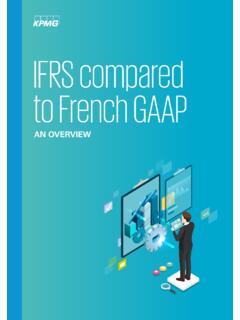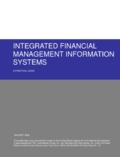Transcription of Handbook on Measuring Digital Trade - OECD
1 Handbook on Measuring Digital TradeVersion 1 Handbook on Measuring Digital Trade Version 1 OECD, WTO and IMF PUBE 2 Disclaimer: This Handbook on Measuring Digital Trade is an online document and represents work in progress. Its findings, interpretations, and recommendations are entirely those of the acknowledged authors. They are not intended to represent the positions or opinions of the WTO or its Members and are without prejudice to Members' rights and obligations under the WTO. They also do not represent the views of the OECD or the IMF and the governments they represent. 3 Handbook ON Measuring Digital Trade OECD 2020 Foreword In response to growing demand for coherent and comparable data on Digital Trade , in 2017 the Inter-Agency Task Force on International Trade Statistics created an Expert Group, drawn from international organisations, national statistics agencies and central banks, to develop a Handbook that provided: A conceptual framework to define Digital Trade , around which national efforts could be targeted.
2 And A mechanism to bring together and share existing national and international efforts on measuringdigital Trade and/or dimensions of it, that could be used to identify and develop best present Handbook reflects the outcome to date of the Expert Group s efforts. It shows that in many areas work is still very much in its infancy and in some respects (for example as regards the measurement and valuation of many data forms) can best be described as embryonic. At the same time, progress continues to be made in frontier issues surrounding the measurement of Digital Trade . It is hoped, not least by highlighting the importance of such issues, that the current Handbook will help to accelerate and assist in those efforts.
3 Recognising that significant work remains to be done, and at the same time that the structure and impact of the Digital economy is evolving rapidly and unpredictably, this Handbook cannot be the final word on the subject, rather it should be viewed from the outset as a living document designed to be updated on a continuous basis (available on the OECD, WTO, IMF and UN websites) as new national and international experiences emerge. 4 Handbook ON Measuring Digital Trade OECD 2020 Acknowledgements Nadim Ahmad (OECD) was the editor of this first version of the Handbook , drawing on contributions of all members of the Inter-Agency Task Force on International Trade Expert Group on Measuring Digital Trade , listed below, and colleagues in the OECD (David Brackfield, Alessandra Colecchia, Marie-Agnes Jouanjean, Daniel Ker, Antonella Liberatore, Javier Lopez Gonzalez, John Mitchell, Julia Nielsen, Peter van de Ven, and Jorrit Zwijnenburg), IMF (Silvia Matei) and WTO (Barbara d'Andrea, Joscelyn Magdeleine, Ninez Piezas-Jerbi and Lee Tuthill).
4 Special thanks are made to Alexis Grimm and Jennifer Bruner of the United States Bureau of Economic Analysis for their detailed and excellent comments throughout the various iterations of this Handbook . Fabienne Fortanier (OECD), Rodolfo Ostolaza (OECD) and Andreas Maurer (WTO) were the Co-chairs of the Inter-Agency Task Force on International Trade Statistics (TFITS) during the creation of the Handbook . Members of the Inter-Agency Task Force on International Trade Expert Group on Measuring Digital Trade included: Fernando Lemos and Thiago Vieira (Central Bank Brazil); Denis Caron, Daniela Ravindra, Jennifer Withington and Diana Wyman (Statistics Canada); Henri Proulx (Global Affairs Canada); Li Kaiyi, Li Qian and Zhai Xy (China Customs); Jonas S lvsten Khalili and Casper Winther (Statistics Denmark); Tommi Kaatrasalo (Statistics Finland); Bertrand Coll s, Fran ois Guinorard, Guillaume Lombardo and Tatiana Mosquera-Yon (Banque de France); Annette Meinusch, Ursula Schipper and Jens Walter (German Bundesbank).
5 Florian G ttsche (German National Statistics Office [DESTATIS]); P ter B nhegyi (Central Bank Hungary); Gyorgy Budahazy and Nikolett Pukler (Hungary National Statistics Office); Sonia Pant (India National Statistics Office); Andy Johan Prasetyo and Gantiah Wuryandani (Bank Indonesia); Niamh Holton and Patrick Quill (Central Statistics Office of Ireland); Rinat Cohen-Moreno (Israel Central Bureau of Statistics); Paolo Forestieri and Carla Sciullo (Italy National Statistics Office [ISTAT]); Giovanni Giuseppe Ortolani (Italy Central Bank); Yuuichi Adachi, Akihiro Nakano, Makoto Saitou and Yumi Suzuki (Bank of Japan); Jos Francisco Cuiriz, Gerardo Durand and Ricardo Gutierrez (Mexico National Statistics Office [INEGI]); Oksana Nadolinskaia, Quinten Meertens and Ger Stam (Statistics Netherlands); Natalia Kupriianova (Bank of Russia); Jos Antonio Foncuberta and Maria Valverde (Spain National Statistics Office [INE]); Louis Dewet (Reserve Bank South Africa); Yusuf Kenan Orhan (Turkey National Statistics Office [Turkstat]); Adrian Chesson, Chloe Gibbs and Daniel Groves (United Kingdom Office for National Statistics); Tom Knight and Nikos Tsotros (United Kingdom Department of International Trade ).
6 Paul Farello (United States Bureau of Economic Analysis); Axel Behrens, Magdalena Kaminska and Carsten Olsson (Eurostat); Dominique Habimana (FAO); Christophe Durand (International Trade Centre); Shyam Upadhyaya (UNIDO); Torbj rn Fredriksson and Onno Hoffmeister (UNCTAD); Jos Ans n and Mauro Boffa (UPU); Valentina Ferraro and Pashupati Pandey (WCO); and Michael Ferrantino (World Bank). 5 Handbook ON Measuring Digital Trade OECD 2020 Table of contents Foreword 3 Acknowledgements 4 Acronyms and abbreviations 8 Executive Summary 101819 21 24 25 27 3031 33 40 41 43 45 46 49 Policy Initiatives from which this Handbook has drawn Structure of the framework for Measuring Digital Trade The conceptual framework for Digital Accounting Recommended reporting mechanismsAnnex Examples of Digital Trade transactions Annex Background to data in the 2008 SNA Annex HS 2017 classification of ICT ordered Introduction 54 Enterprise surveys 54 Household surveys 59 Credit card data 61 Using data from
7 Other payment processing firms 64 De minimis Trade 65 Digitally ordered merchandise Trade directly from customs statistics 69 Data linking and private data sources 71 Conclusions 72 Annex Extract from OECD Measuring the Digital Transformation : Measuring e-commerce 74 References 77 6 Handbook ON Measuring Digital Trade OECD 2020 4. Digitally delivered Trade 80 Introduction 81 Compiling digitally delivered transactions using ITS surveys 82 Compiling digitally delivered transactions using ITRS data 95 Compiling digitally delivered transactions using administrative tax data 96 Compiling digitally delivered transactions with household surveys 101 Digital financial services provided by non-bank entities 102 Annex Potentially Delivered Services Classification List EBOPS 2010 and CPC Ver 107 Annex Eurostat s proposed concordance table for EBOPS and Modes of Supply 110 Annex WTO s proposed concordance table for EBOPS and Modes of Supply (TISMOS)
8 112 Annex Crypto assets and Cryptocurrencies 114 References 116 5. Digital intermediation platforms 120 Introduction 121 Accounting principles for DIPs 121 Identifying Digital intermediation platforms 125 Compiling transactions facilitated by DIPs 127 Conclusion 134 References 135 Annex A. Extract from OECD Measuring the Digital Transformation : the Digital transformation and economic statistics 137 Annex B. Recommendations from the OECD Informal Reflection Group on the Impact of Globalisation on the Measurement of GDP 140 Annex C. Extract from OECD Measuring the Digital Transformation : Measuring Cloud Computing Services 145 Annex D.
9 A Toolkit for Measuring the Digital Economy: Extract from the 2018 G20 Ministerial Declaration 148 Annex E. Recommendations from the US Department of Commerce report: Measuring the Value of Cross-Border Data Flows (2016) 151 Annex F. OECD-IMF Stocktaking Survey on Measuring Digital Trade 152 References 153 FIGURES Figure 1. Template for reporting Digital Trade (simplified) 16 Figure Potentially ICT-Enabled Services (ITES), % of total Trade in services 19 Figure The conceptual framework for Digital Trade 33 Figure Channels used to book accommodation online - Italy s border survey - 2016 61 Figure Percentage of respondents to the OECD-IMF Stocktaking questionnaire 66 Figure Changing modes of accessing banking services: Mobile and Internet banking 103 Figure Example of transactions via Digital intermediation platforms.
10 Unpacking a DIP transaction 123 Figure Proposed net recording of Trade transactions related to Digital intermediation platforms 124 7 Handbook ON Measuring Digital Trade OECD 2020 Figure Percentage of respondents that can identify: 126 Figure A categorisation of the businesses according to their use of the internet Netherlands 127 Figure Spanish domestic and outbound trips 130 Annex Figure Off-line and online payments by age in Spain, 2016 76 Figure conceptual unifying framework 138 Figure Global data centre workloads and compute instances by applications: Traditional vs. cloud (2016) 147 TABLES Table reporting template for Digital Trade 41 Table Potentially ICT-enabled services 83 Table Format of BEA s ITSS Questions to Collect Sales and Purchases of Services Remotely Performed 89 Table Mode 1 comparison between BEA s simplified approach and the US estimates from the International Trade in Services survey.













